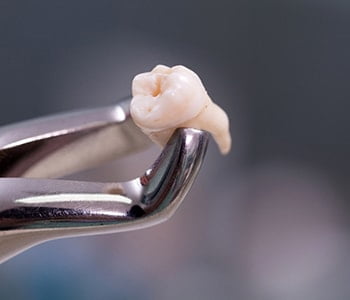The dentist explains, if you are experiencing severe pain following a tooth extraction, it is most likely alveolar osteitis, which is also commonly referred to as dry socket. It can be agonizing, leaving you reaching for painkillers.
What is dry socket?
Dry socket is inflammation of the bone surrounding the area of the tooth socket and it happens when the blood clot fails to form or the blood clot is lost. Once the blood clot is lost, the bone becomes exposed and often dies off (necrosis)
What can cause dry socket?
The risk of dry socket can be increased by the following factors:
1. Smoking
Smoking reduces the blood supply of the mouth. The less blood you have around the extracted tooth socket, the slower the healing and the greater the chance you will have of experiencing dry socket.
2. Losing the blood clot by rinsing with water after the extraction
Its always best not rinse following a tooth extraction because if you wash away the blood clot, the socket will take longer to heal and have an increased risk of getting dry socket
3. Traumatic Extraction
Sometimes having a traumatic extraction can lead to you getting dry socket
4. Oral contraceptive or specific times of the menstrual cycle
Studies have shown that taking oral contraceptives increased your risk of getting dry socket. This is caused by hormonal changes and is also relevant to women who are in the middle of their menstrual cycle.
5. Infection
If you have had an infection around the tooth that is supposed to be extracted, it can lead to an increased risk of developing dry socket.
6. Vasoconstrictors
Adrenaline is often contained within the local anesthetic as it causes vasoconstriction, which means that the blood vessels get smaller and stop the flow of blood to the area. This works well, as it reduces bleeding during surgery and more importantly; it holds the anesthetic in the area. If it wasn’t used, the anesthetic wears off quicker. This sometimes works a little too well and can lead to dry socket, as it reduces the blood flow to the area.
What is the treatment for dry socket?
The best treatment for dry socket is applying PRGF to the socket and stitching the gum over it. PRGF contains platelets and growth factors that will speed up healing – in fact, if it is used correctly, it will 100% prevent the formation of dry socket. However, the problem is that most dentists do not provide this special technique.
Other ways to treat dry socket:
- See your dentist who can wash the socket with a disinfectant and place a dressing. They could also place stiches if necessary
- Strong painkillers
- Warm salty mouth washes
How can I prevent dry socket?
- Avoid smoking
- Ensure you are treated by an experienced dental surgeon
- Don’t rinse your mouth for 24 hours after a tooth extraction
- Don’t fiddle with the wound
- Stick to a soft light diet
- Avoid eating/drinking too hot foods/drinks















